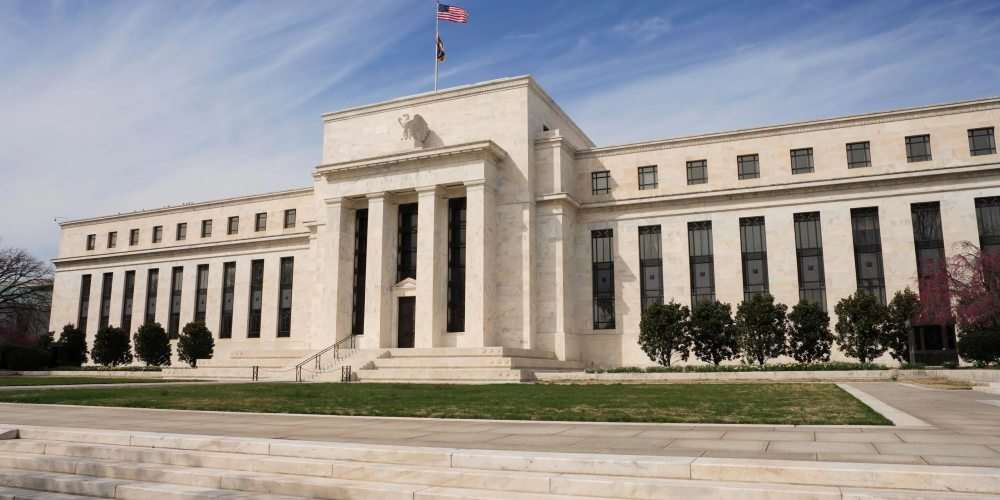(Mises)—Most Americans realize that our federal government has, in recent decades, spent so recklessly that it runs ever-increasing annual federal budget deficits (currently nearly $2 trillion) and now sits on over $36 trillion in outstanding federal debt. This spending—overseen by Congress and the Executive branch—has been profligate since the 1960s Great Society, wars in Vietnam and the Middle East, the 2008-09 financial crisis, the ongoing Obamacare entitlement, and the 2020-22 Covid pandemic. But many Americans may not realize that the Federal Reserve System (the Fed)—America’s independent central bank, owned by private commercial banks that are members of the system—has recently behaved similarly, spending amounts well beyond its earnings.
The Fed’s Revenues and Expenditures
Congress established the Fed in 1913 as an independent central bank, minimally accountable to Congress and the Executive branch. The intent behind granting Fed “independence” was to keep politics out of its management of the US money supply and interest rates. Unique among the world’s central banks, the 12-district Fed system is owned by its member banks, a group that includes all federally-chartered banks and those state-chartered banks who opt to join the Fed system. Each of these member banks is required to maintain non-marketable capital stock of its respective Fed district bank, on which banks receive 6 percent annual dividends.
Unlike other congressionally-created independent agencies, the Fed receives no funding in the federal budget. Rather, the Fed’s main source of income is the interest it earns on its $6.5 trillion portfolio of US Treasury bonds and mortgage-backed securities that it holds on its balance sheet in the course of executing its monetary policy. The Fed also receives some fee-based income for its regulatory and supervisory services to the banking industry.
The Fed’s expenditures include its own operating costs, such as salaries and overhead, interest paid on commercial banks’ reserves held at the Fed, dividends paid on its member banks’ ownership of capital stock in their respective Fed district banks, and as much financial support to the Consumer Financial Protection Bureau (CFPB) as its director requests to fund its operations. Thanks to the 2010 Dodd-Frank law that created the CFPB, the bureau is uniquely housed within the Fed, unlike any other federal agency.
By law, any Fed “profits” (excess earnings after covering its own expenses and those aforementioned obligations) are to be transferred to the US Treasury Department to support ongoing federal expenditures. These remittances to the Treasury benefit taxpayers; any missed payment imposes a cost on taxpayers.
The Fed’s Erstwhile Remittances to Treasury
Before 2022, the Fed remitted $5 billion to $10 billion per month to the US Treasury; between 2011 and 2021, the Fed’s remittances totaled over $920 billion. Since then, the Fed has run a monthly operating loss between $5 billion and $11 billion per month, and is thus unable to remit any funds to the Treasury. These accumulating Fed losses are classified as a “deferred asset,” a negative liability whose value is the cumulative amount of the earnings shortfall. Once the Fed returns to earning positive net income, it will pay down the value of the deferred asset until it reaches zero and the Fed can resume sending regular remittance to the Treasury.
The “deferred asset” concept is recognized by both the Financial Accounting Standard Board (FASB) and Generally Accepted Accounting Principles (GAAP), though not in the context of the Fed’s accounting methods. The Fed observes neither FASB nor GAAP guidelines because it is deemed free to design its own accounting standards.
Knowledgeable observers have questioned how the Fed can sustainably spend more than its earnings allow. Mises Senior Fellow Alex Pollock and his frequent co-investigator, American Enterprise Institute Senior Fellow Paul Kupiec, have addressed this major question, most recently here and here. Their sound analyses are correct to question the Fed’s creative accounting strategy to classify an accounting loss as a “deferred asset.”
The Fed’s Magic Carpet Trip
Obvious questions arise about the Fed’s recent financial wherewithal: are the Fed’s losses genuine? Who pays for its deficit spending?
Yes, the recurring losses are genuine in both an accounting and an economic sense. One cannot ignore the economic principle that no one can gain something at no cost to oneself or some other party, that nothing is “free” despite frequent claims to the contrary, and every action or choice taken always incurs an opportunity cost measured as the cost of foregone alternatives.
An alternative view of the Fed’s operating losses comes from Jason Furman—a professor at Harvard University’s John F. Kennedy School of Government and former chair of President Obama’s Council of Economic Advisors. He believes that Fed losses do not impede its ability to fulfill its dual mandate of ensuring maximum employment and price stability. He further explains that the Fed was never designed to turn a profit, that it has fulfilled its assigned macroeconomic goals with mixed results over time, and that insolvency is meaningless in the world of central banking. He does concede, however, that Fed losses do lead to higher federal budget deficits and outstanding debt, thus costing American taxpayers.
Notwithstanding Furman’s explanation, what can observers make of the Fed’s quasi-legal accounting strategies—the deferred-asset treatment of Fed remittances to the US Treasury, the continuing payment of interest and dividends to the banking industry, and the full support of CFPB’s operations?
Magic Carpet Support for CFPB
Recall that by law CFPB has no other revenue source aside from its dependence on Fed earnings, whereas the US Treasury and the banking industry do have other sources. The Congressional Research Service reports that CFPB’s 2025 budget and employees are, respectively, $810.6 million and 1,758.
With no earnings, how can the Fed provide financial support to CFPB? AEI economist, Paul Kupiec, surmises that the Fed borrows funds from the bank reserves that the banking industry holds on deposit at the twelve Fed district banks. Yet, as he points out, he is not aware that the Fed is legally authorized to borrow to fund another government agency such as CFPB.
Yet another disconcerting possibility arises, because of the Fed’s unique power to create bank credit out of “thin air,” a power shared with other central banks around the world. Such credit creation—sometimes euphemistically referred to as “printing money”—is accomplished by buying assets such as Treasury securities on the open market, which monetizes the debt.
The Fed also has the power to literally print money, that is, to issue US currency without limit, creating an automatic profit for itself. This profit is technically referred to as seigniorage, which represents the difference between the face value of currency and its inherent cost of production. For example, a $100 Federal Reserve Note (our US currency) costs only 12.6 cents to produce but has purchasing power of $100, giving the Fed an instant $99.874 profit that could be put to any use of its choice.
Both techniques of “printing money” can generate spendable funds that the Fed could use to support CFPB, or pay dividends and interest to banks—or possibly the missing profit remittances to Treasury. This strategy, however, would certainly result in rapid price inflation and US dollar depreciation by increasing the US money supply. In fact, the first method of printing money by buying Treasury securities is exactly what caused the 2022-24 run-up of price inflation as the US Treasury issued large amounts of covid-related debt and the Fed obliged by creating new bank credit in order to buy this debt in the open market.
Are We There Yet?
While on the Fed’s magic carpet trip, Americans may well raise many questions: how long will the magic carpet trip last, and how does it end? How much will the Fed’s deficit spending ultimately cost taxpayers? How long will it be until the Fed can repay those deferred assets accumulating every year that the Fed misses its profit remittances to Treasury? Do people in high places understand what the Fed is doing? And, if they understand, are they motivated to investigate further in order to take some corrective action?
-
Learn the TRUTH about Gold IRAs and how most precious metals companies play dirty.



